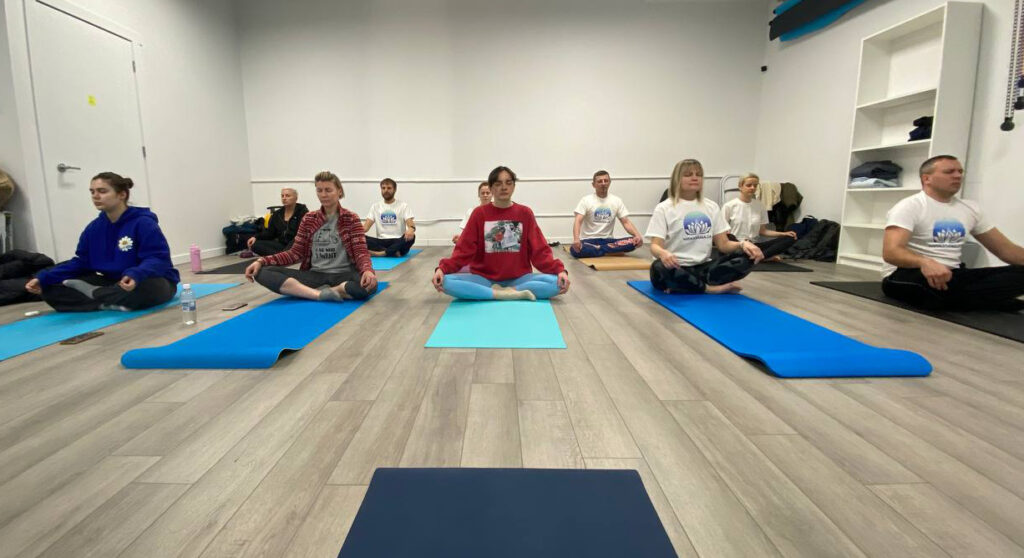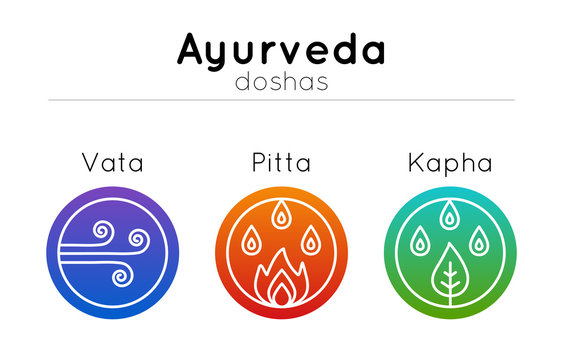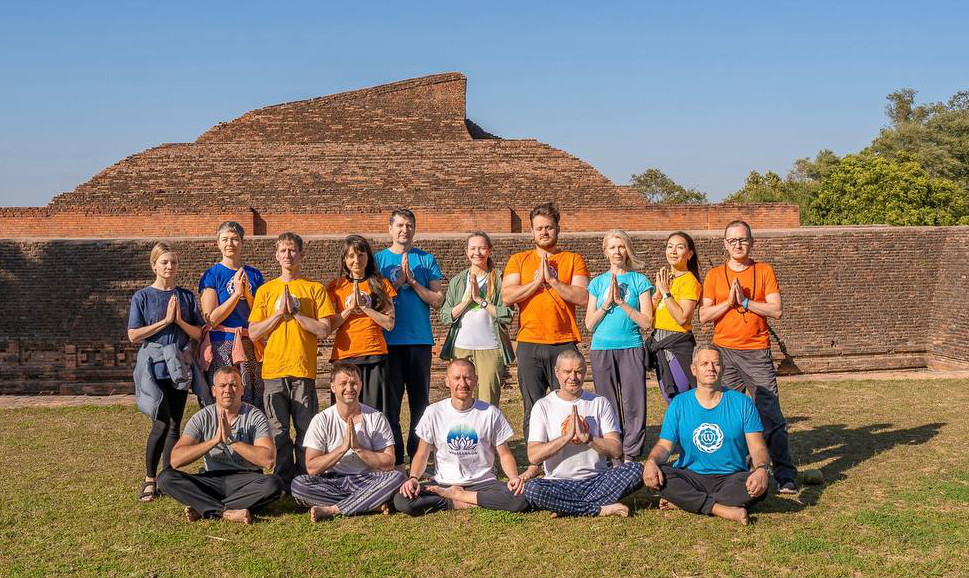Meditation today is not an elite practice but an accessible tool for anyone feeling overwhelmed by information, mental tension, or a loss of inner balance. Regular practice helps identify stress triggers, manage emotions, and restore energy when it seems depleted. You gradually notice that decisions come more easily, thinking becomes clearer, and sleep improves. Just a few simple techniques are enough to feel your inner equilibrium revive and your ability to focus strengthen. That’s why we’ve gathered tips for beginners, ranging from setting up your space at home to taking your first steps in the practice itself.
What Is Meditation and How Does It Work?
Meditation is the practice of consciously observing the flow of your thoughts, feelings, and bodily sensations. Imagine the mind as an unstoppable stream of information: the goal of the practice is to direct your attention where it is truly needed. Most often, this involves watching your breath or focusing on a specific mental image.
Among the main types of meditation:
- Mindfulness Meditation: This approach is based on observing your thoughts, feelings, and bodily sensations without interfering with or judging them. One example technique is the “body scan”, in which your attention gradually shifts from one part of the body to another, allowing you to experience sensations without criticism or analysis.
- Focused Meditation: In this form of practice, attention is concentrated on a single object, such as the breath, a mantra, or an internal image. When the mind wanders, you consciously return it to the chosen focus. This exercise is especially useful for those who struggle with concentration.
- Loving-Kindness Meditation (Metta): In this practice, you sequentially send kind intentions to your loved ones, neutral persons, and even people with whom you have difficult relationships. By repeating phrases like “May they be happy and free from suffering”, you strengthen your compassion and the ability to restore harmony in your interactions. This technique expands your circle of empathy and gradually breaks down internal barriers to openness and warmth.
Scientific studies confirm that regular practice alters the structure of gray matter, strengthens neural connections, and activates brain regions responsible for emotional regulation, attention, and self-control. In other words, meditation not only brings immediate relief but also gradually transforms your brain into a resilient instrument capable of working more clearly and efficiently.
How to Prepare for Meditation at Home
Preparing for meditation at home begins with setting up a space that won’t distract you. Find a small area where nobody will disturb you—ideally a corner with minimal furniture and, if possible, closed windows or earplugs to block outside noise. The atmosphere should feel cozy: lay a mat or soft blanket on the floor. There are no strict rules for posture—what matters is that your spine stays straight and your shoulders relaxed. You can use a cushion to support your lower back and pelvis. Proper support helps avoid back discomfort and enables you to stay longer in practice. If sitting becomes painful, allow yourself a semi-reclined position or lean your back against a wall.
Choose a time that suits your personal rhythm: morning meditation helps generate energy for the entire day, while an evening practice relieves accumulated stress. Starting with 5–10 minutes is perfectly enough to feel the first wave of freshness. Gradually increasing the duration will build the stability of your practice, but consistency is always more important than length.
A timer or specialized apps such as Headspace or Insight Timer can assist you—they free you from watching the clock and let you fully immerse yourself in the practice.
Step-by-Step Process Meditation for Beginners
For beginners, meditation starts with preparing your body and mind for the practice. First, sit comfortably—on a cushion, chair, or mat—and align your spine. Imagine an energy flow rising from your tailbone to the crown of your head, with your shoulders remaining light. Close your eyes or fix your gaze on a point in front of you. This helps minimize external distractions. Next, focus on the natural rhythm of your breathing: without changing its pace, inhale and exhale while paying attention to the sensation of air, the movement of your diaphragm, and the gentle rise of your chest. The breath becomes an “anchor” that keeps you in the present moment.
During the practice, thoughts, memories, or plans may arise. Don’t try to silence or analyze them—simply label them with the word “thought” or “memory” and return your attention to your breath. Each return of focus trains your ability to concentrate and gradually makes your meditation more effective. It’s important to remain patient: distraction is a natural part of the process. When you notice that your attention has drifted, gently bring it back without self-criticism. Over time, this skill grows stronger, and your mind becomes more resilient to stress.
At the end of the practice, allow yourself a few seconds of calm observation. Slowly open your eyes, take a deep breath, and return to daily activities. This gentle exit from meditation helps preserve clarity and balance throughout your day.
Common Mistakes and How to Avoid Them
Many people become disappointed when they expect an instant “wow effect.” In reality, benefits accumulate gradually: concentration and calm build through short but daily practice. Planning an hour from the start without adaptation is the quickest path to burnout—begin with five minutes and add a few minutes each week.
Another common mistake is falling asleep during meditation. If you lie down or sit too relaxed, the brain shifts into dozing. The solution is a stable seated position with a straight spine and slight engagement—this prevents the mind from drifting off.
When a flood of thoughts commands your mind, don’t try to suppress or analyze them. Simply label each as “thought”, “memory”, and return to the sensation of breath. This way, you train mindfulness rather than battling your mind.
Doubts about the technique’s correctness also arise for every beginner. Don’t search for the perfect posture or formula: the practice itself matters. It’s better to meditate five minutes daily than to have a long session once a month. Consistency is more important than perfect execution.
Finally, avoid overly long practices from the outset. Start with 5–10 minutes, then gradually add time. This approach preserves motivation and avoids feelings of exhaustion.
How to Make Meditation a Regular Habit
Consistency in meditation develops gradually, so don’t plan for hour-long sessions right away or expect instant results. Build regularity through small actions embedded in your daily routine. To remember your practice, attach it to an existing habit. For example, after your morning cup of tea or before dinner, set aside five minutes for meditation. Such an “anchor” automates the action without extra willpower.
Technical reminders are your ally. Set push notifications on your phone or enter practice times in your calendar. Apps like Headspace and Insight Timer offer gentle chimes and short exercises at any time of day. Thanks to them, you don’t have to watch the clock—the app simply prompts you when to pause and dedicate time to awareness.
Keeping a simple journal is a powerful way to support motivation. Record the date, duration, and key sensation after each practice. After a couple of weeks, you’ll notice patterns—perhaps mornings are clearer, evenings more soothing. This insight lets you adjust timing and format to maximize benefits.
Gradually increase duration by adding a minute or two each week—a straightforward way to strengthen the habit without overload. Once your brain gets used to short daily practices, you won’t need to seek motivation—the habit becomes part of your life naturally.
Additional Resources for Deepening Your Practice
If you want to diversify your approaches, here are some trusted sources. In the Headspace and Calm apps, you’ll find structured courses on topics ranging from anxiety reduction to better sleep. Insight Timer offers free practices from various teachers—from quick five-minute sessions to deeper thirty-minute explorations.
Among books, the classics remain indispensable: The Miracle of Mindfulness by Thich Nhat Hanh provides simple exercises that easily fit into daily routines, and Wherever You Go, There You Are by Jon Kabat-Zinn explains mindfulness from both scientific and practical perspectives. Both read smoothly and inspire experimentation in meditation.
Free online MBSR (Mindfulness-Based Stress Reduction) courses from the University of Massachusetts are available on YouTube—Jon Kabat-Zinn’s lectures and guided exercises help you dive deeper. YouTube channels regularly publish short videos with breathing techniques, mindful walking, and gentle movements.
By exploring various formats, you can find what best suits your lifestyle. Experiment with different methods so meditation doesn’t become a routine but remains a living, valuable tool for maintaining clarity and calm.
Conclusion
Starting meditation at home is simple: prepare a quiet space, choose a comfortable posture, and focus on your breath while observing thoughts without judgment. Avoid typical mistakes—don’t expect instant miracles, don’t overload yourself with long sessions, and don’t fixate on perfect technique. To turn meditation into a habit, begin with five minutes daily, attach the practice to your morning or evening routine, use reminders, and keep a simple journal of dates, durations, and feelings after each session.
Try it right now: set aside five minutes, sit comfortably, close your eyes, and observe your breath. A small step today can mean greater clarity, calm, and inner strength tomorrow.



